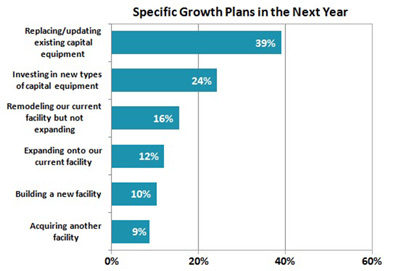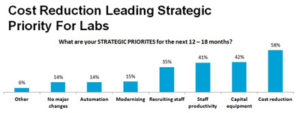By Gina Smith, CMRP, AMS, Director of Business Development, Health Industry Distributors Association
Experts See Lab Volume Growth, Despite Shrinking Reimbursements
There’s been a lot of talk lately about how reimbursement cuts under the Protecting Access to Medicare Act of 2014 (PAMA) will impact the laboratory and diagnostics market. While we expect these cuts to have an impact on providers, both leading diagnostic experts and HIDA research suggest that overall testing volume may grow in coming years.
Consumers and payers are looking for ways to reduce long-term health spending, and diagnostics offer multiple opportunities to achieve this goal. Speakers at HIDA’s recent Laboratory & Diagnostics Market Conference cited numerous examples of such opportunities, including helping physicians appropriately use HbA1C testing to reduce complications and hospitalizations for diabetic patients, testing for medication adherence, and testing for opioid use.
Findings from HIDA’s 2017 Laboratory Care Market Survey indicate testing volume will likely grow. The majority of respondents forecast some form of growth, with 56 percent anticipating volumes to grow by one to five percent, and 15 percent of expecting even higher growth. Despite expected volume gains, lower reimbursements are constraining lab spending and investment.
Investment slows, but providers still plan for growth
Most diagnostic providers still have plans to invest in new or existing capital equipment, though reimbursement cuts are clearly impacting strategic plans.
About 68 percent of lab survey participants report planning for growth within the next year. Among this subset, 39 percent plan to update or replace existing capital equipment, while 24 percent intend to invest in new types of capital equipment.
While significant, these levels of investment are less pronounced compared to 2016, when 57 percent of respondents indicated they were planning to replace or update capital equipment, and 29 percent were planning to invest in new types of capital equipment.
In addition to cost pressures, consumer demand will playa new role in shaping diagnostics. Robert Michel, publisher of The Dark Report, predicted instances of point-of-care testing will triple over the next eight years in part because it allows providers to more quickly supply results to patients. He observed, “Patient expectations are not met by a lab system that collects a sample on Tuesday and provides results to the patient on Wednesday or Thursday.”
Labs focus on cost reduction
Even though most lab managers expect volume growth, 58 percent list cost reduction as their leading strategic priority. To control costs, managers are looking to reduce their supply budgets. More than half of provider respondents have already cut their supply budgets, and even more are looking to make cuts sometime in the next two years. This marks a notable change from the 2016 survey, when only 35 percent expected supply budgets to decrease. Providers also identified offering discounts for cash payments, delaying capital expenditures, and standardizing their products as ways to save.
At HIDA’s lab conference, Ran Whitehead, President and CEO of PeaceHealth Labs, predicted PAMA implementation could result in fee schedule cuts of up to 20 percent. Michel added the program is projected to reduce spending by $5.5 billion over 10 years, including $400 million in 2018.
Diagnostics have untapped potential to lower healthcare costs, though changing payer trends will drive more strategic use of testing that reflects need and caters to patient expectations. To access the Laboratory Care Market Survey, visit www.HIDA.org/MarketSurveys.

